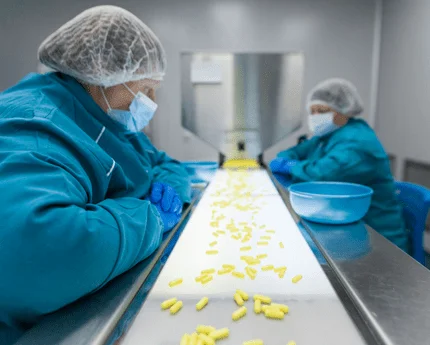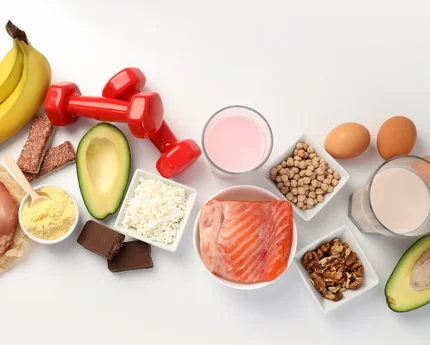
Pharma Contract Manufacturer in India One of the main industries in India that generate money is the pharmaceutical industry. To stay up with the industry’s expanding requirements, this sector needs a blend of both cutting-edge knowledge and innovation. With the emergence of India’s pharmaceutical contract manufacturing industry over the past few decades, the pharmaceutical industry has advanced significantly in addition to being prolific in terms of pharmaceutical production lines. Over the past few years, the pharmaceutical contract manufacturing sector has experienced explosive expansion. The main causes of this are India’s cost-efficient pharma contract manufacturing facilities and the expiration of drug patents. Pharma Contract Manufacturers in India have proven to be a blessing for pharmaceutical companies struggling with the manufacturing process of pharmaceuticals because they now have access to contract manufacturers to outsource their drug production and make astronomical profits at very affordable costs. PharmaSynth is a reputable company that manufactures pharmaceuticals under contract in India. We produce generic medications under various brand names in accordance with the specifications set by our business partners. By providing sufficient compliant facilities to fulfil the large magnitude of demands and by ensuring that all of our products are created with high-quality ingredients while remaining competitively priced, we help your brand obtain the most exposure. The market praises our products for their dependability and effectiveness. In addition, Pharma Synth not only dominates its own production line but also India’s pharmaceutical contract manufacturing industry. *We are capable of producing pharmaceutical tablets, capsules, syrups, gels, lotions, ointments, and other products on a wide scale. *We have a sophisticated quality control system. *We abide by GMP’s strict requirements. *We have a skilled group of experts in the field of pharmaceutical contract manufacturing. Our big production units, highly skilled production and quality control personnel, and WHO-GMP certified manufacturing facilities come together to create the perfect environment for pharmaceutical contract manufacturing in India. Pharma Synth, an Indian pharmaceutical contract manufacturer, will benefit your business by: *giving you comfort by managing all of your outsourcing drug needs. *successfully meeting your needs for medical products and pharmacy supplies. You don’t need to seek any further if you’re looking for a Pharma Contract Manufacturer in India; just contact us. For pharma contract manufacturing in India, we can provide you with high-quality goods at pricing that are extremely affordable. Focus on your sales, pay attention to the areas that need it most, and leave the rest to us. With our help, you can reduce your manufacturing workload and focus on running your business instead of worrying about meeting production expectations. We have good manufacturing experience that is used for contract production in addition to our own marketing. We manufacture for the aforementioned esteemed clients through third parties and under loan licences. In addition to our own marketing, we also use our solid product knowledge for contract manufacturing. We manufacture for the aforementioned esteemed clients through third parties and under loan licences.

Oncology Oncology, as a scientific field, is defined as the study of tumours and cancers. One denotes bulk, mass, or tumour, and -logy implies study in the word. An oncologist’s role Cancer specialists or oncologists are medical professionals who practise oncology. These oncologists play a variety of roles. They aid in the diagnosis of cancer, the staging of cancer, and the classification of cancer’s aggressiveness. Oncology diagnostic instruments The patient’s clinical history is still the most important diagnostic tool. Fatigue, weight loss, unexplained anaemia, fever of unknown origin, and other symptoms that point to cancer are common. Oncology relies on diagnostic tools such as biopsy, or the removal of tumour tissue and examination under a microscope. Endoscopy for the gastrointestinal tract, imaging studies such as X-rays, CT scanning, MRI scanning, ultrasound and other radiological techniques, Scintigraphy, Single Photon Emission Computed Tomography, Positron Emission Tomography, and nuclear medicine techniques, among others, are other diagnostic tools. Blood tests for biological or tumour markers are common methods. The presence of these markers in the blood may be indicative of cancer. How widespread is cancer? Millions of people are living with or have had cancer today. Cancer is the country’s second leading cause of death. In the United States, approximately half of all men and one-third of all women will develop cancer during their lifetime. How long has cancer existed? Some of the earliest evidence of cancer can be found in fossilised bone tumours, ancient Egyptian human mummies, and ancient manuscripts. Mummies have been found with abnormalities resembling osteosarcoma, a type of bone cancer. The first known description of cancer is found in the Edwin Smith Papyrus, which is a copy of an ancient Egyptian textbook on trauma surgery. It describes eight cases of breast tumours or ulcers treated with cauterization using a tool called the fire drill. It dates from around 3000 BC. The condition is described as “incurable” on the papyrus. Cancer treatment Oncologists assist in the planning of therapy for each of their patients based on the grade and stage of their cancer. This could be accomplished through surgery, chemotherapy, radiation therapy, or other means. Other experts Other specialists may be involved in cancer treatment. This includes surgeons, radiation oncologists, and radiotherapists, among others. Oncologists, on the other hand, oversee the entirety of cancer treatment. Relapse and remission Following the completion of initial therapy, oncologists are responsible for monitoring the patient for relapse and remission. The former denotes a recurrence or return of cancer, whereas being in remission denotes cancer-free status. Screening for cancer Oncology and cancer research entails screening the general population for cancer as well as screening patients’ relatives (for cancers thought to have a hereditary basis). In the case of breast cancer, for example, both population screening with mammography and familial screening with genetic analysis of the BRCA1 and BRCA2 genes are used. Palliative care In patients with terminal cancer, the oncologist is also in charge of palliative or symptomatic care. This and other treatment-choice issues raise several ethical concerns, including patient autonomy and choice, which the oncologist must address. Progress in oncology A massive amount of research is being conducted in all areas of oncology, from cancer cell biology to chemotherapy treatment regimens and optimal palliative care and pain relief. As a result, oncology is a constantly changing and evolving field. Clinical trials are used in cancer research. Patients are frequently enrolled in large studies coordinated by Cancer Research UK (CRUK), the Medical Research Council (MRC), the European Organization for Research and Treatment of Cancer (EORTC), or the National Cancer Research Network (NCRN) in the United Kingdom (NCRN).

High-Calorie Snacks for Smarter Weight Gain Avocado Toast It’s popular for a reason! Avocado’s creamy texture pairs well with crispy, crunchy whole wheat bread. Spread half an avocado over two slices of toasted whole wheat bread, then season with salt and pepper. You’ll consume roughly 300 calories as well as a lot of heart-healthy monounsaturated fats. Full-Fat Yogurt With Fresh Berries and Honey Full-fat Greek yoghurt contains slightly more calories than regular yoghurt, so if you want to consume extra calories, pick Greek. One cup of whole milk Greek yoghurt contains approximately 238 calories compared to one cup of whole milk normal yoghurt, which has 149 calories. Stir a half-cup of fresh blueberries, strawberries, raspberries, or blackberries into a 6-ounce container of whole milk Greek yoghurt for a delicious afternoon snack or healthy dessert. To sweeten the bargain, drizzle with honey. Chopped nuts can be added for extra healthy fat, vitamin E, and magnesium. Ingredient Protein Balls These protein balls have it all, despite having just three ingredients: protein, fat, and carbohydrates. Not only that, but they’re a piece of cake to create! 1 ½ cup old-fashioned oats, 3 tablespoons honey, and 2/3 cup creamy peanut butter in a food processor Form into balls and you’re ready for some high-calorie, healthy eating. These bits also freeze nicely, so make extra to keep in the freezer. Pita Nachos In terms of health, not all nachos are made equal—but a Mediterranean-style version can be beneficial. Begin with whole wheat pita chips, then layer on hummus, chopped tomatoes, cucumber, red onions, and crumbled feta cheese. It’s a fun twist on a classic that you may even serve as a party snack. DIY Trail Mix Is there a more convenient snack than trail mix? Tossing together a mixture of your favourite nuts, dried fruits, seeds, and even chocolate is as simple as tossing items in a mixing basin and stirring. (And you don’t have to be trekking to enjoy this snack.) Include extra calories by adding banana chips, chocolate candies, and/or macadamia nuts, which are all heavy in fat. For easy grab-and-go simplicity, portion trail mix into zip-top baggies. Blueberry Tofu Smoothie We understand that “smoothie” and “tofu” don’t appear to go together. The benefit of incorporating silken tofu into a fruit smoothie is that it mixes easily, giving protein, calories, and bulk without drastically altering the taste. Peanut Butter on Graham Crackers It may appear easy, but sometimes the simplest solution is the best! Spread two tablespoons of creamy or crunchy peanut butter on two graham crackers for a snack high in calories and fat (19 grams). It will be much better if you can find (or prepare) whole wheat graham crackers. Crunchy Roasted Chickpea Wrap Beans and legumes are a no-brainer for lunch or supper, but these high-fibre, healthful foods can be difficult to squeeze in between meals. (After all, there aren’t many bean-based treats on grocery store shelves.) Crunchy roasted chickpeas are about to alter that! Drain the chickpeas and put them out on a baking sheet. Drizzle generously with olive oil and your chosen seasonings, then roast for about 20 minutes at 425 degrees Fahrenheit. Wrap the roasted chickpeas on lavash bread with crumbled full-fat feta cheese. Cheese and Crackers Beans and legumes are a no-brainer for lunch or supper, but these high-fibre, healthful foods can be difficult to squeeze in between meals. 5 (After all, there aren’t many bean-based treats on grocery store shelves.) Crunchy roasted chickpeas are about to alter that! Drain the chickpeas and put them out on a baking sheet. Drizzle generously with olive oil and your chosen seasonings, then roast for about 20 minutes at 425 degrees Fahrenheit. Wrap the roasted chickpeas on lavash bread with crumbled full-fat feta cheese. Egg Salad Bagel You may be acquainted with egg salad as a meal in and of itself, but it may also serve as a major weight-gain snack. Combine two hard-boiled eggs with a tablespoon of mayonnaise, salt, pepper, and, if preferred, a sprinkle of dried dill. Make a sandwich out of a sliced bagel that has been cut into quarters. Quinoa Dark Chocolate Bark A weight gain diet isn’t always about sweets, although it may surely contain them! Try quinoa dark chocolate bark for a guilt-free sweet treat. Toast a half cup of uncooked quinoa in a pot for a few minutes before melting 8 ounces of dark chocolate. Mix everything together, then spread it out on a baking sheet lined with parchment paper. Freeze until solid, then break into pieces. If you use high-quality dark chocolate, these chocolaty wedges are not only tasty but also packed in antioxidants. In addition, both quinoa and chocolate contain fiber.

0